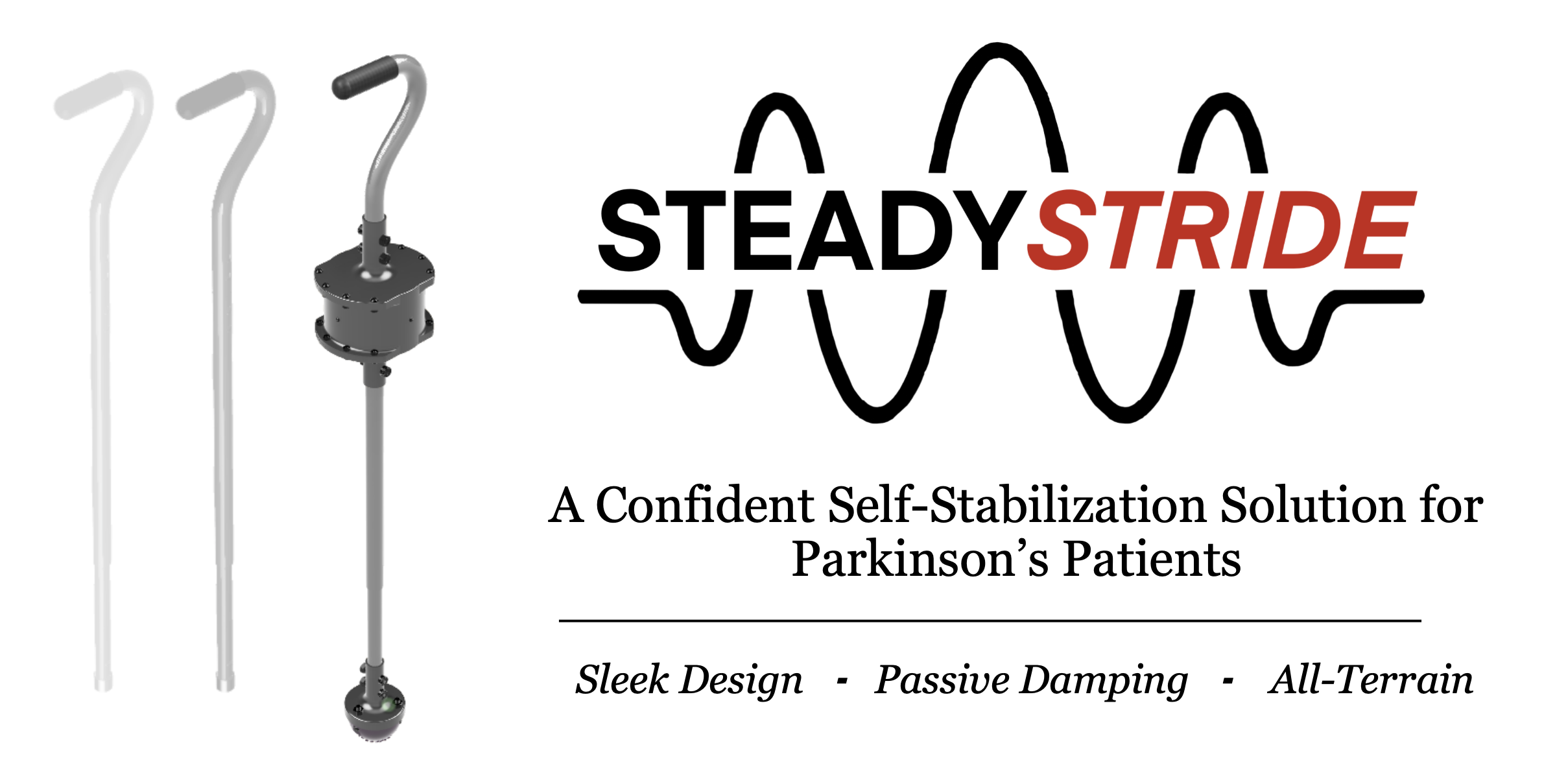Steady Stride - The Tremor Resistant Cane
2024 Medtronic BMES Design Competition Winner
〰️
2024 Medtronic BMES Design Competition Winner 〰️
September 2023 - October 2024 • Cornell University • Cornell DEBUT Project Team • Device Design, Dynamic Modeling, and Prototyping
As a part of Cornell DEBUT, I lead product development and start-up feasibility for a tremor resistant cane design for Parkinson’s Patients intended to effectively dampen hand tremors. The prototype comprises of two main characteristics: a spring-based, two-degree freedom damper, in addition to a specially 3D-printed thermoplastic base for increased surface contact during gait. The idea is a shared effort, however, all the following media is either solely produced or led by myself as technical lead/ project manager on Cornell DEBUT.
Background
Cornell DEBUT is an undergraduate biomedical engineering entreprenuerial product development group affiliated with Cornell University. Our group dedicates two years towards market discovery, early-stage ideation, and basic clinical testing to submit novel products for the DEBUT VentureWell grant as a part of the National Institute of Health (NIH). I was recruited following the market discovery phase isolated the distinct need for devices stabilizing gait for stage II and III Parkinson’s Patients, where my expertise in mechanical design lead played majority in leading the alpha prototype design process.
Alpha Prototype Design Phase
-
In order to confirm the efficacy of the design idea, I began the development of a modeling program that completed the following:
Plotted the position of the whole cane with preset mass and spring constants
Plotted the average residual of each motion in a 3D plotter as mass and spring constants are changed.
To complete such an extensive task, I leveraged dynamic modeling systems in MATLAB to anticipate the dampening effects required for effectively mitigating the intense hand tremors. Over 300 lines of MATLAB code is written to solve the system of four ordinary differential equations given the preset mass and spring variables, and stores the values of position in a mutable array, and the average residual in another. Images of outputs are presented at the end of the section
-
Following confirmation through the mathematical modeling, the next steps involved creating more specific designs for the components. Referencing an ideal spring and mass combination from the previous model in addition to some prior concept sketches, I designed the current iteration of the integrated tuned-mass damper with the tremor-resistant cane. Additionally, I provided a conceptual design for the stabilizing base with the intent of implementing flexible TPU as the main material. All components shown are comprised of parts referenced from MacMaster and are fully jointed to simulate the real-life assembly of the device.
-
Currently, the cane is in the manufacturing stage, and although still early on, some initial parts have been sent out for 3D-printing. With my experience in rapid prototyping, I have been consulting on the qualities and characteristics of each specific part. I personally 3D-printed the initial concept for the stabilizing TPU base to test the proper infill required for a mixture of rigidity and flexibility in the design for proper use. Additionally, I interfaced the part with the stem of a typical aluminum cane and confirmed the strength of the design. From here, I will continue to focus on assembling the prototype for the tuned-mass damped, in addition to conducting some rudimentary testing before integration into the cane.
Photos/ Supplementary Resources


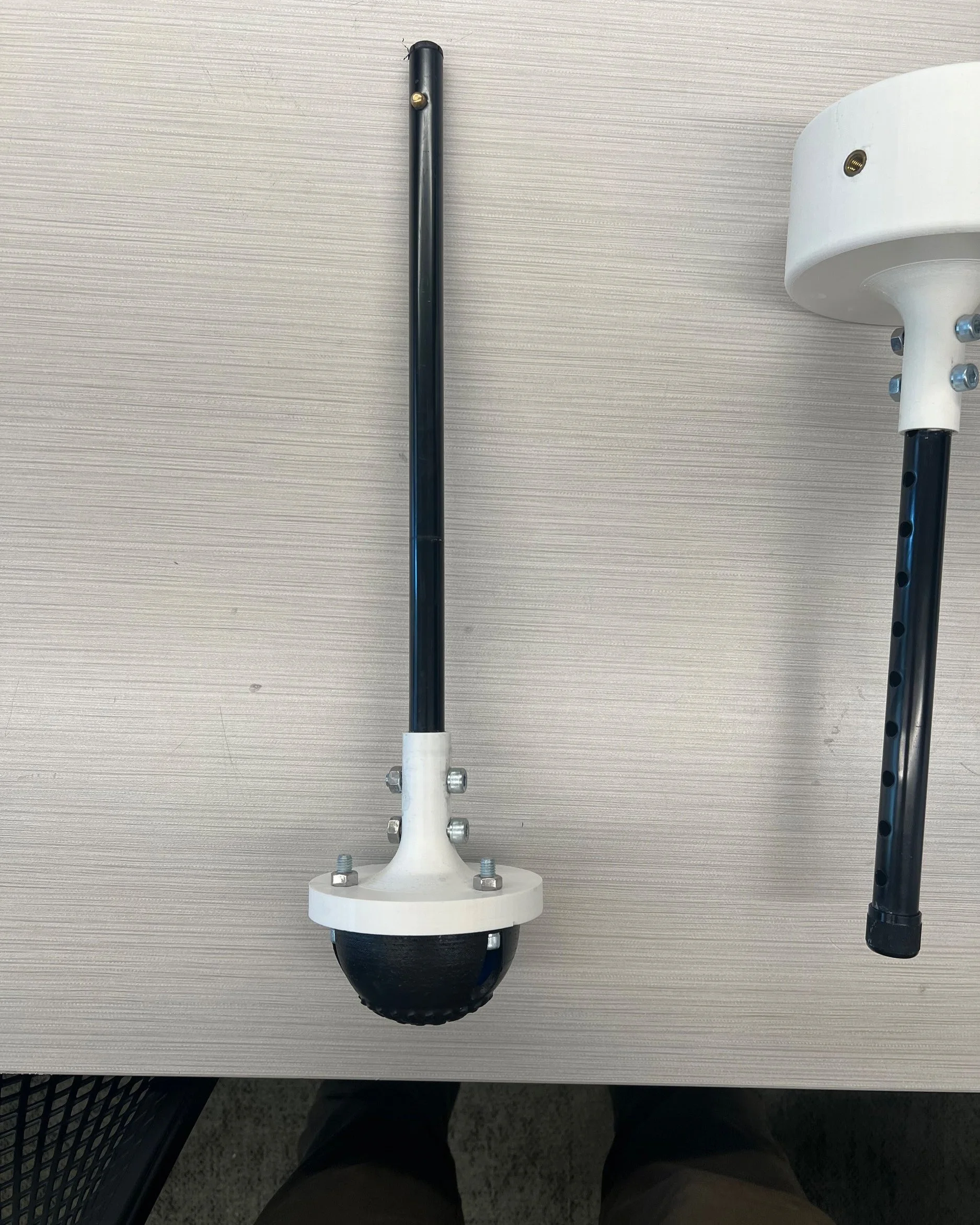
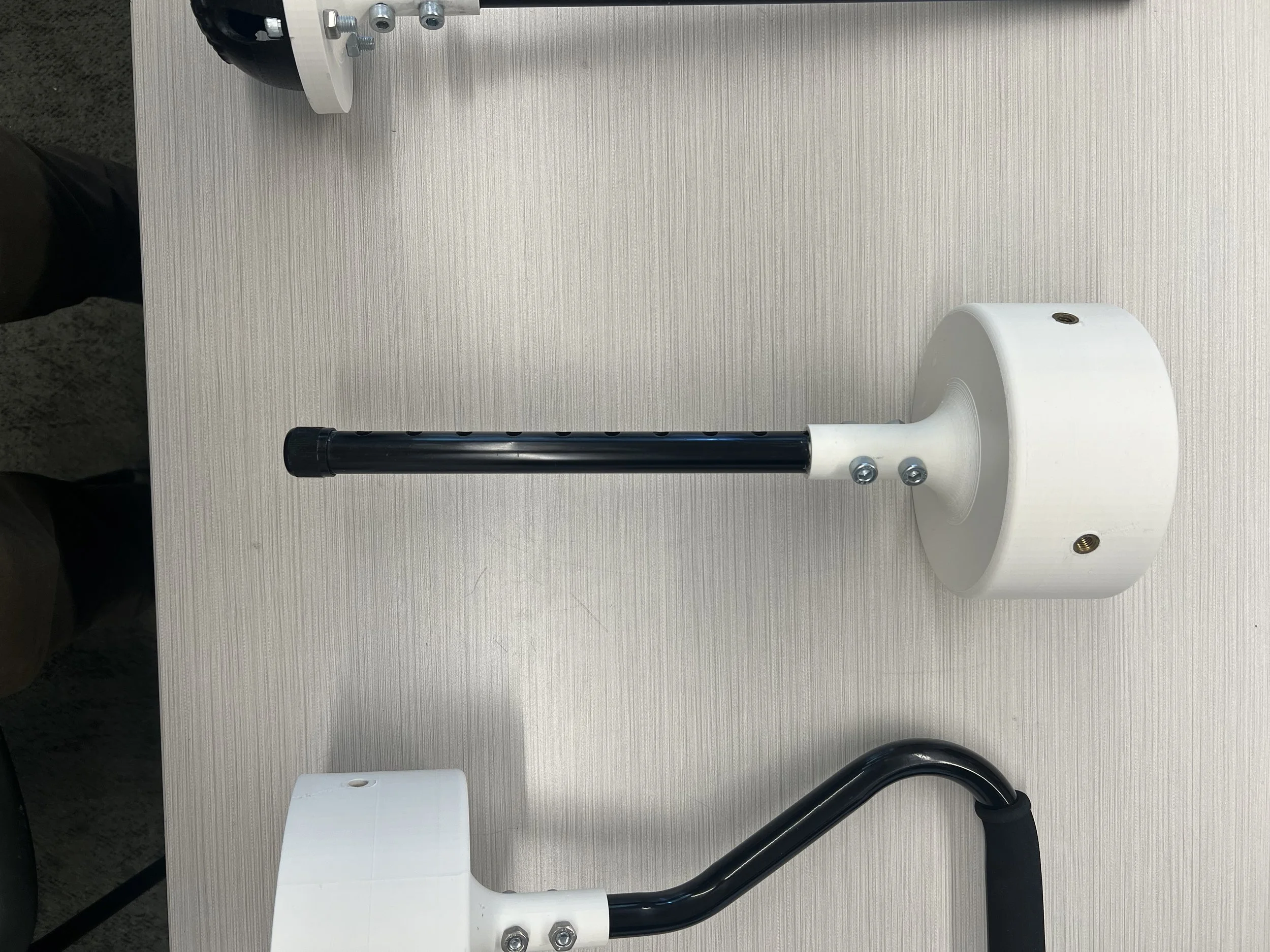

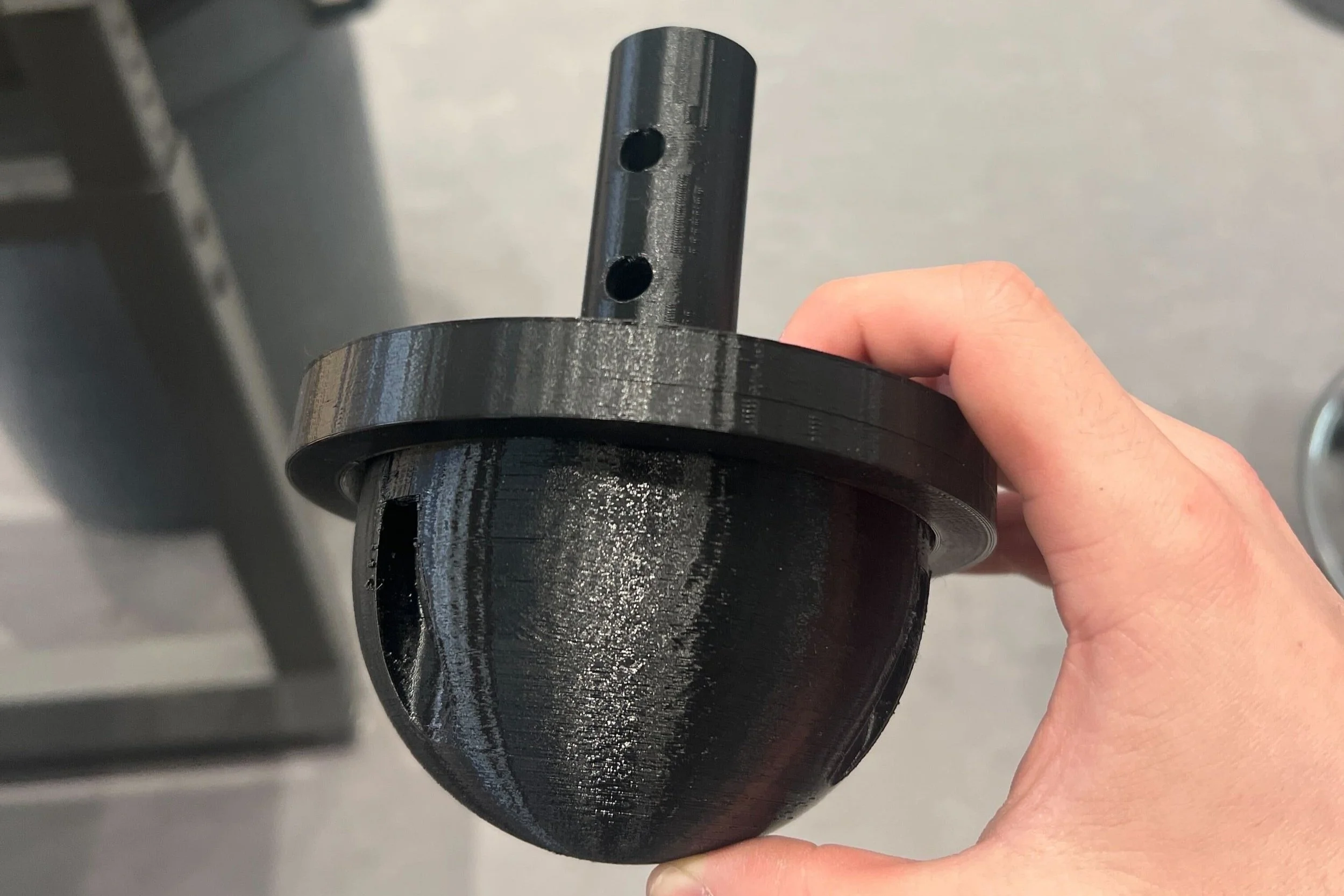
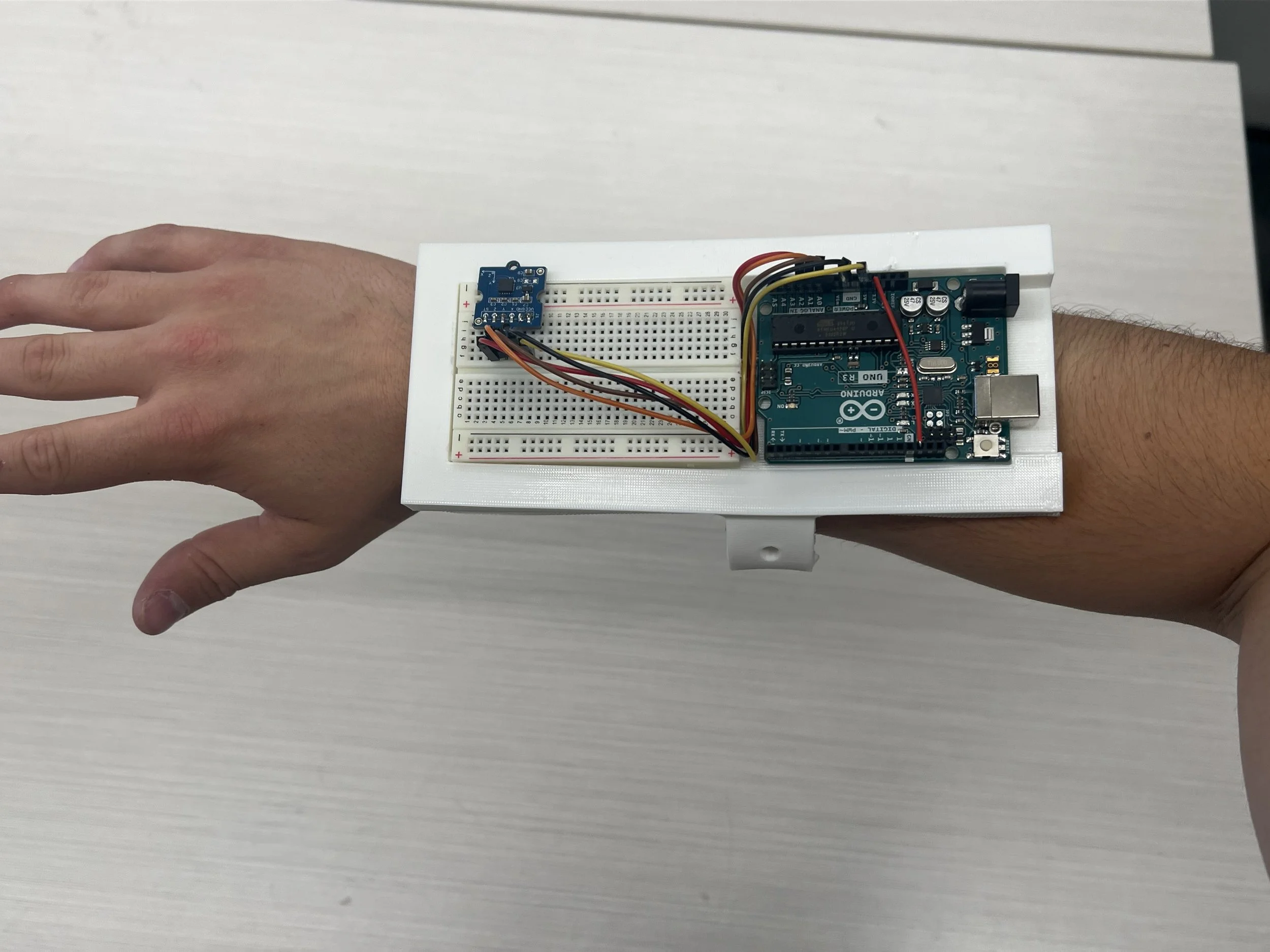
Clinical Testing (IRB-Approved)
After filling for IRB-approval at the start of 2024, our team began developing the final prototype for patient use and design some experimental testing equipment. The final prototype utilized in patient testing is shown in the video below, and usage is demonstrated by me. With a functioning design, I created an accelerometer-based sensor connected to a TPU arm-strap to record relative changers in hand tremors. With data acquired from testing at SUNY Cortland’s Kinesiology Lab, I filtered and analyzed the data in MATLAB, determine between a 12-15% decrease in relative hand tremor amplitude for 3 out of 4 of the patients in the direction of tremor propagation.
Individual graphs and data points are not included to avoid any violation of health data confidentiality. Please feel free to reach out with any additional questions about clinical testing and results!
Beta Prototype Design Phase
-
After selected as BMES/Medtronic Student Design Competition finalists, I was had become project manager for the Cornell DEBUT team. Within this role, I directed most changes that transformed SteadyStride from a research project into a minimum viable product. One of the major directives I lead was developing the pitch deck utilized for the conference, which included branding, economic projections, and full-design renderings.
Below is the slide deck utilized for the BMES/ Medtronic Student Design Competition and all future communications with potential investors.
-
Additionally, I lead developments to overhaul the experimental design of the original prototype (“works like”), into a more realistic minimum viable product (“looks like, works like”). Compared to the previous cane that was comprised of 4 major individual PLA components that were difficult for manufacturing, I spread headed articulating the individual parts and optimizing with DFM and supply chain logistics in mind. The final result was a more sleek and non-obstructive design that was more in-line with our mission statement for the device
